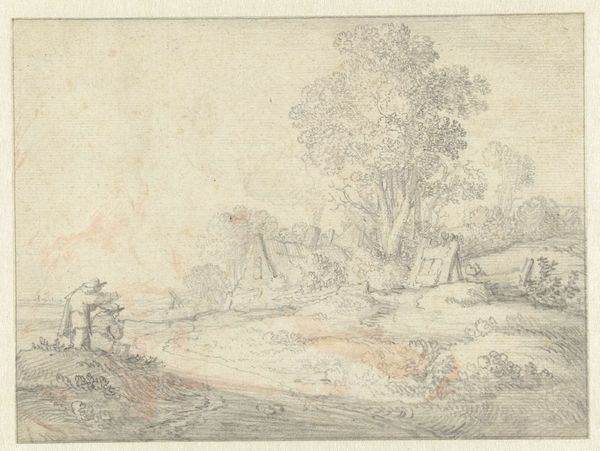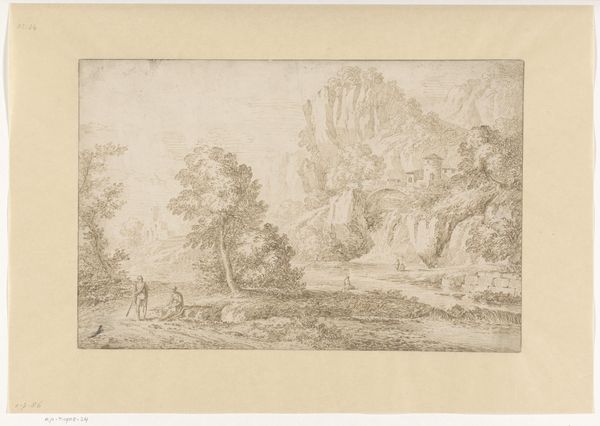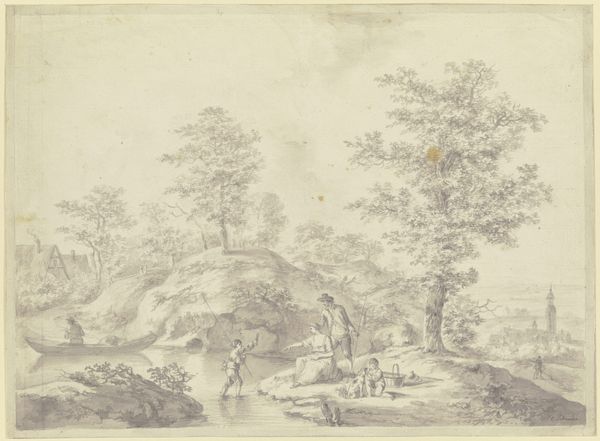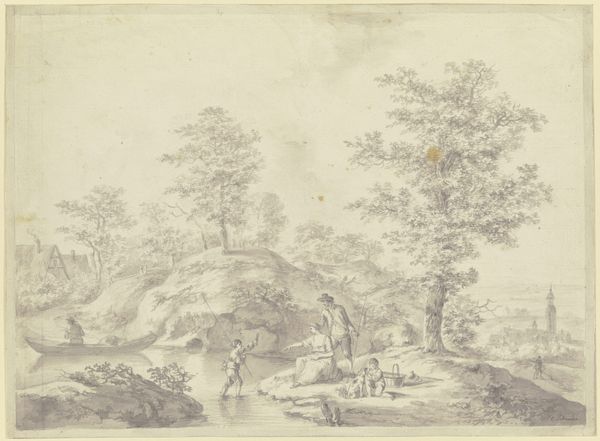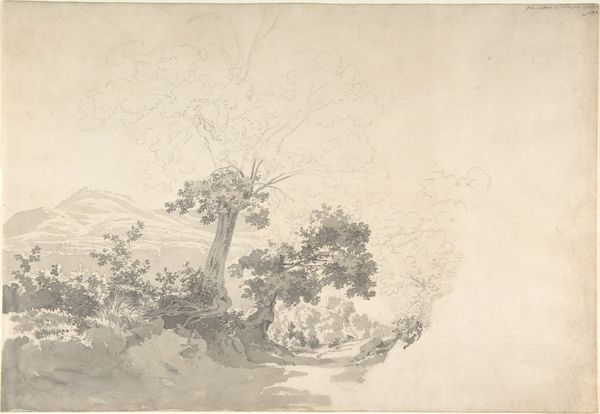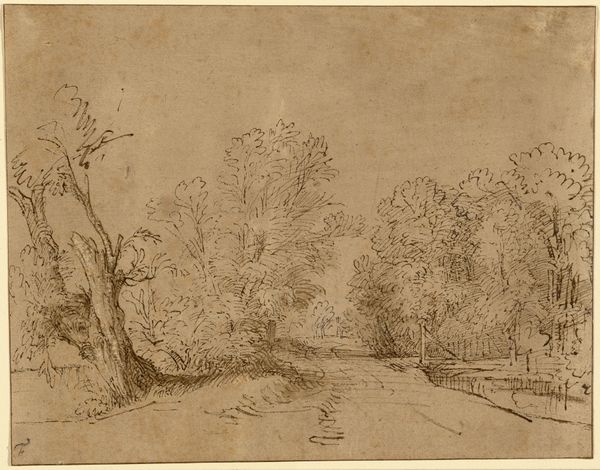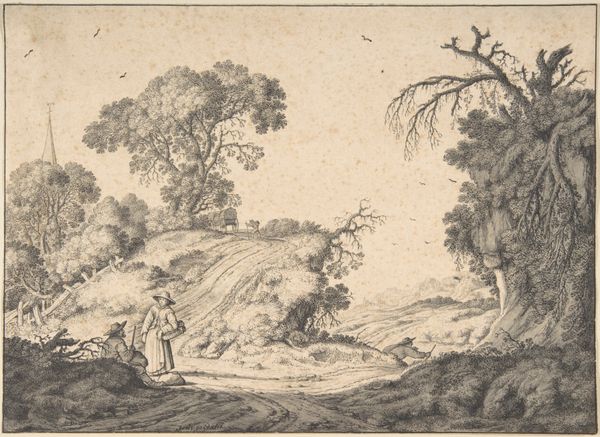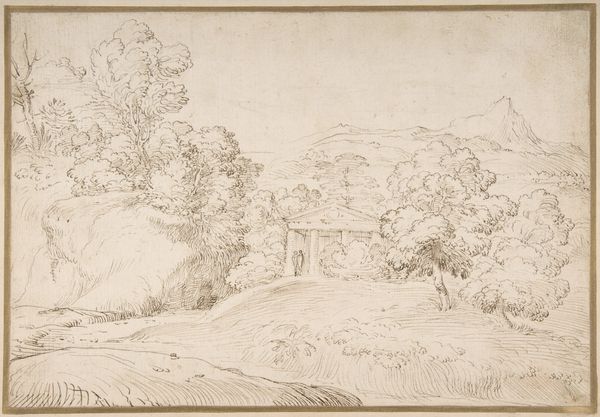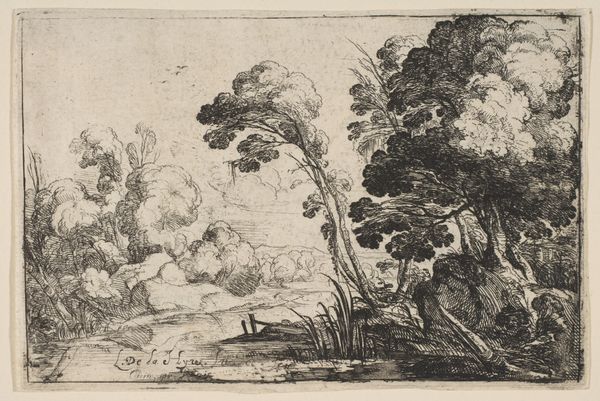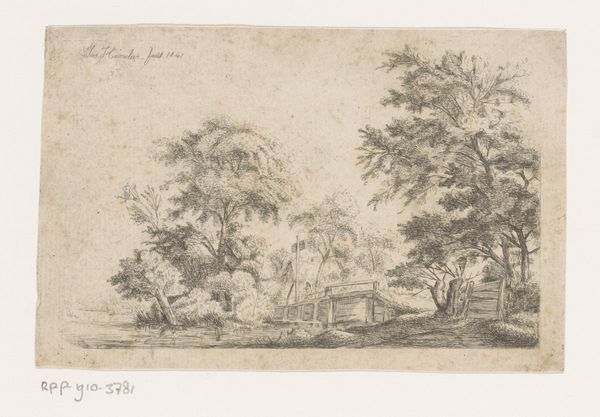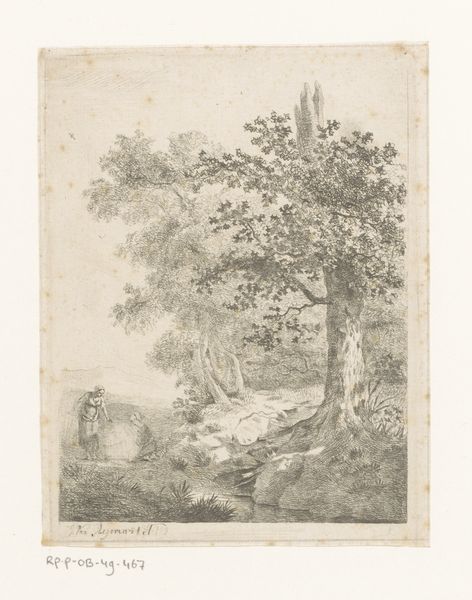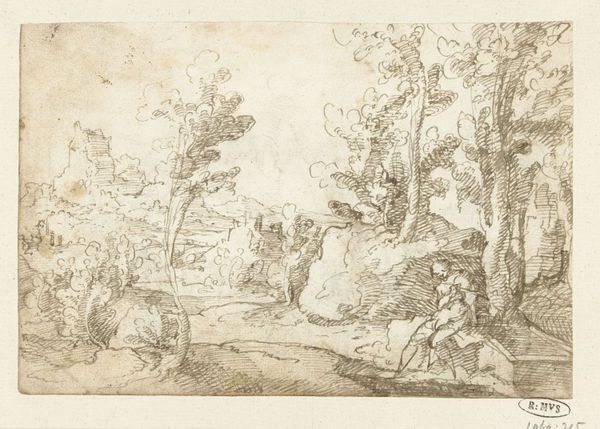
drawing, ink, pencil
#
drawing
#
baroque
#
landscape
#
ink
#
pencil
#
italian-renaissance
Copyright: Public Domain
Curator: I’m immediately struck by the ethereal quality of this drawing. There's something almost dreamlike in its washes of sepia ink. Editor: Indeed. This is “Landscape near Bracciano,” a work on paper rendered in pen, pencil and brown ink attributed to Bartholomeus Breenbergh, likely created between 1626 and 1629. Curator: Looking at it through a lens of the early 17th century and artistic labor… This work reminds us how much landscape art served both aesthetic and documentary purposes. The paper itself becomes a site where the external world meets internal processing, where land merges with imagination and colonialist exploits. Editor: From a materialist perspective, it's fascinating to consider the embodied labor involved in producing this image. What kind of pencils and ink were used? What paper making processes allowed for such delicate washes and fine lines? It's important to connect the beauty of this work with the labour of the people who sourced, processed, and manufactured its materials. Curator: Absolutely. Breenbergh, during the Dutch Golden Age, situated himself, much like other artists, amid complicated, unequal economies. But thinking of labour beyond just material sourcing… Look closely at those figures. Do they symbolize leisure? Commerce? What socioeconomic class are these walkers? Their purpose affects how we perceive this vista. Editor: And the land itself-- how "empty" is this "Landscape?" Someone cultivated it, likely. Understanding the relationship between the figures and the means of production transforms our viewing of this scenery and offers an interrogation of pastoral ideals. Curator: We see it through an era that glorified dominion over nature. Thinking about class and access makes me consider today’s landowners. How are those in positions of power affecting the spaces they control? "Landscape near Bracciano" could make us ask these complex questions surrounding access, environment, and ownership. Editor: Precisely! It’s important to appreciate the formal qualities and delicate nature of the craft whilst considering what socio-economic landscapes it is actually reproducing, representing, and ideologically consuming. Curator: Thinking through the landscape depicted and the materials Breenbergh used truly makes me consider its artistic context through intersectional social issues of labor, gender and class—broadening the lens we place on a drawing like this one. Editor: By considering the making and production aspects here we can analyze not just beauty, but how intertwined even the finest art is within our own global networks and power structures.
Comments
No comments
Be the first to comment and join the conversation on the ultimate creative platform.
